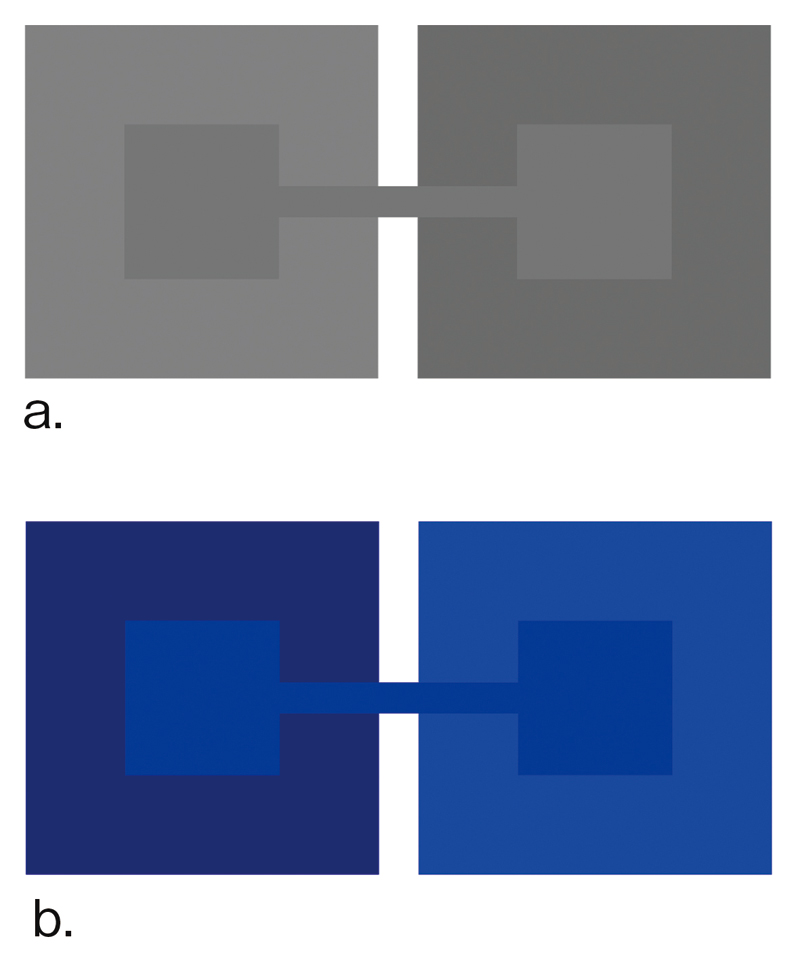Lightness
明度
Meido
CATEGORIES
Achromatic and chromatic colors both have dark and light colors. Lightness (sometimes called value) describes the degree of this variation in brightness. It is one of the three attributes of color (hue, lightness and saturation).
Lightness is closely related to the reflectivity of light. For example, yellow is highly reflective so it has a high lightness value but blue and purple are not so reflective and thus have low lightness values. Achromatic colors only have this attribute of lightness. White, which is highly reflective, has a high lightness value while black has a low value.
Perception of lightness can also depend on the brightness of the adjacent color. This is called value contrast. In the value contrast diagrams, the central grey section surrounded in light grey (left) in Diagram a. looks darker than the section surrounded in dark grey (right). In Diagram b., the central blue section surrounded in dark blue (left) looks lighter than the section surrounded in light blue (right).
Though values will depend on the color display method used, colors can be organized by assigning values based on their lightness and darkness. In the Munsell color system, this ranges from 0 for pure black (color that does not reflect any light) and 10 for pure white (color that reflects all light). This is then divided perceptually into 10 equal divisions and a value is assigned to each division to express lightness numerically. In reality, however, because it is not possible to recreate pure black and pure white, color samples are shown on a scale of 1 to 9.
* The chart shown is only an approximate display of the relationship between colors and is not an accurate recreation. Colors also appear different depending on the viewing environment.
 Munsell color system equal hue color chart (Hue: 5R)
Munsell color system equal hue color chart (Hue: 5R) Value contrast
Value contrast
